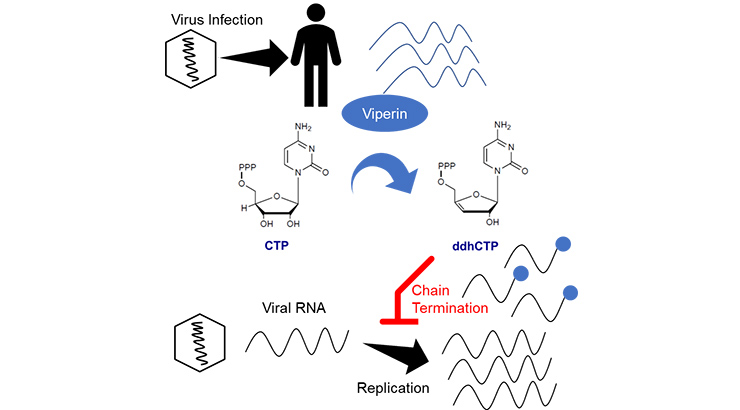A Novel Broad-Spectrum Viral Inhibitor
ID# 2017-4657
Technology Summary
Viral infections continue to represent major challenges to public health, and an enhanced mechanistic understanding of the processes that contribute to the viral life cycle is necessary for the development of new therapeutic strategies. Inventors at the Albert Einstein College of Medicine and Penn State University have determined that viperin, a member of the radical S-adenosyl-l-methionine (SAM) superfamily of enzymes, catalyzes the conversion of cytidine triphosphate to a previously undescribed biologically relevant molecule, 3′-deoxy-3′,4′-didehydro-CTP (ddhCTP). The inventors have successfully demonstrated that ddhCTP acts as a chain terminator for the RNA-dependent RNA polymerases from multiple members of the Flavivirus genus and directly inhibits replication of Zika virus in cell culture.
Based on this discovery, the inventors have created a suite of ddhCTP derivatives that may be used to inhibit the RNA-dependent RNA polymerases from flaviviruses as well as other RNA and DNA viruses. Ongoing development includes the development of prodrugs to enhance transformation to the active metabolite to bolster the therapeutic efficacy.
Application & Market Utility
The present invention represents a potential therapeutic with broad-spectrum, antiviral activity. However, primary indications are expected to include RNA viruses, including Flaviviruses. New treatments for flaviviral (example: Zika) infections are critical. Infection by Flavivirus members represents the leading causes of hemorrhagic fever (Yellow Fever) and viral encephalitis (Japanese encephalitis virus) worldwide. However, for most Flaviviruses, therapeutic treatments are not available.
Next Steps
Seeking research collaboration and licensing opportunities.

